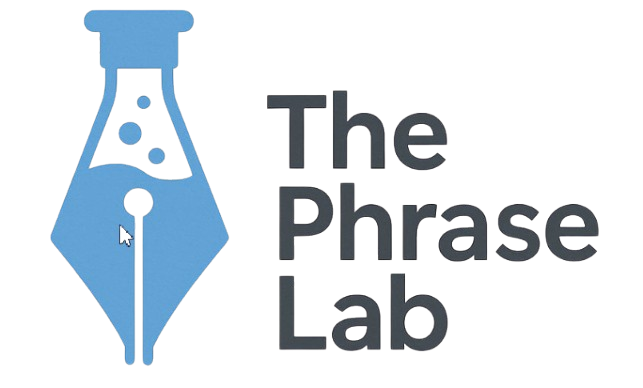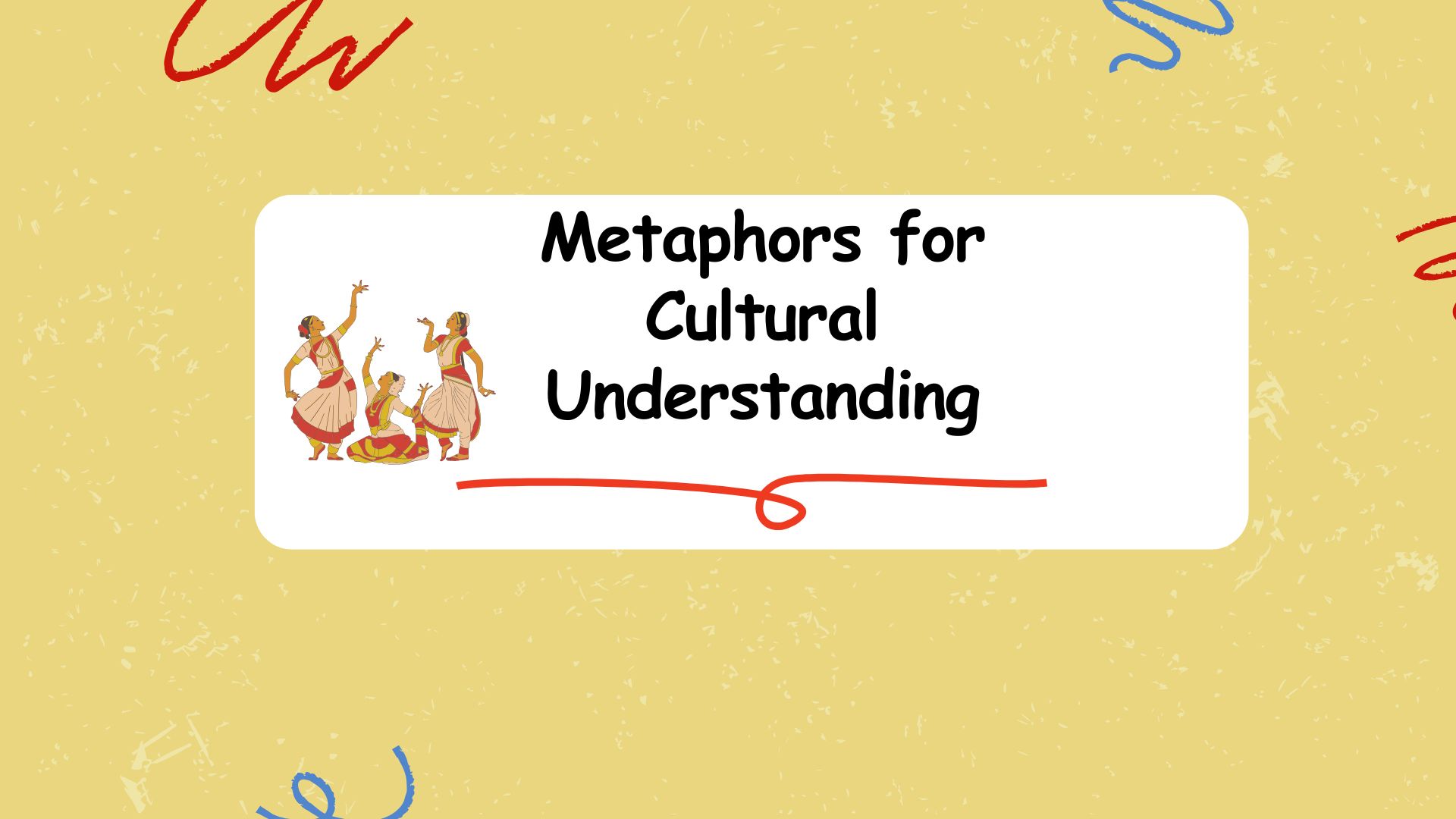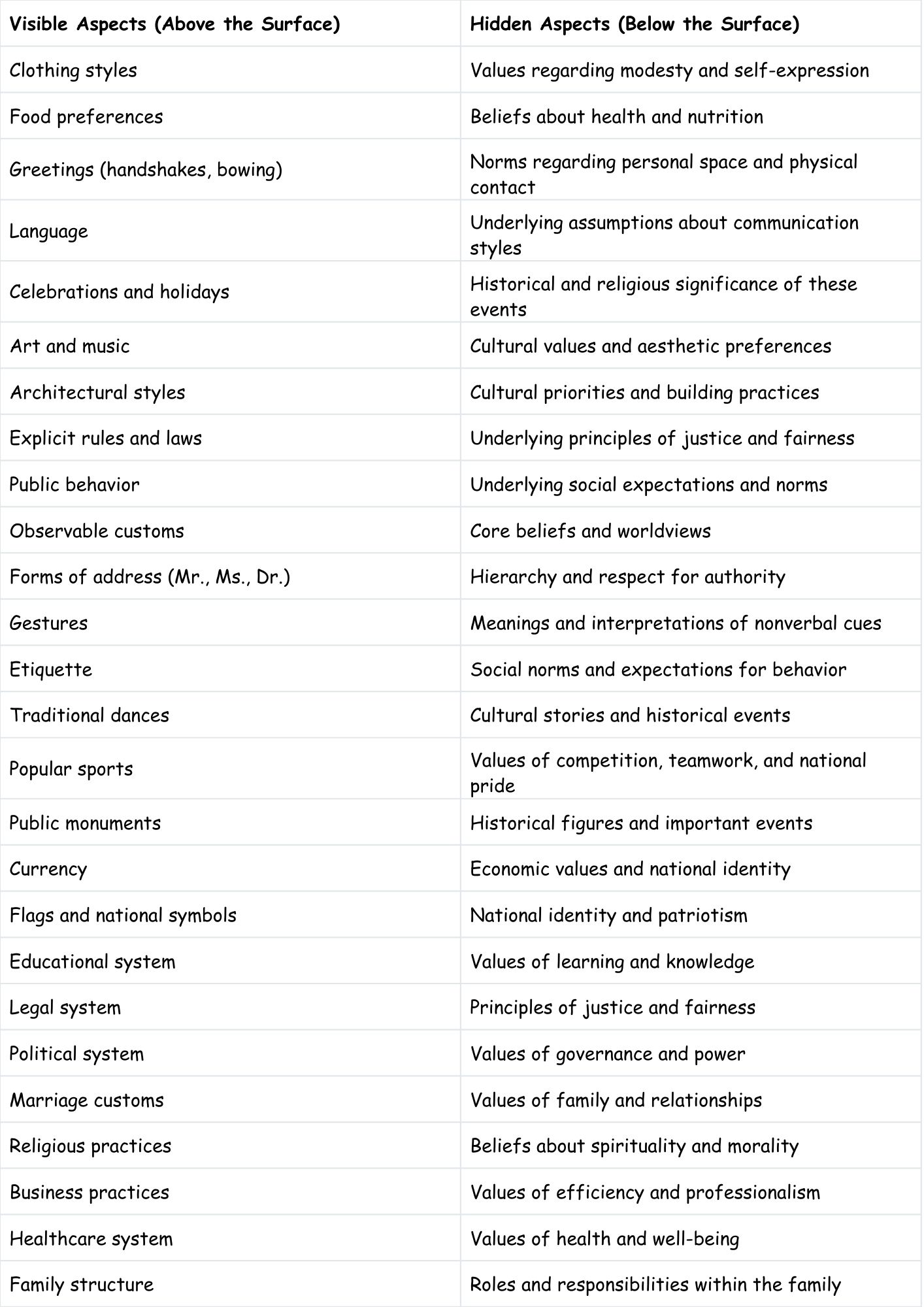
90 Plus Metaphors for Cultural Understanding

Understanding culture can be challenging because it’s an abstract concept encompassing traditions, values, and beliefs. Metaphors provide a powerful tool for grasping these complexities by framing culture in relatable terms. This article explores common metaphors used to describe culture, examining their implications and how they shape our perceptions. By delving into these metaphors, we can gain a deeper, more nuanced understanding of cultural dynamics. This guide is perfect for students, educators, business professionals, and anyone interested in intercultural communication and anthropology.
This exploration will not only enhance your understanding of the English language but also improve your ability to think critically about cultural differences and similarities. Learning about metaphors for culture is essential for effective communication and building bridges across diverse communities.
Table of Contents
- Introduction
- Defining Culture and Metaphor
- Structural Breakdown of Cultural Metaphors
- Types of Cultural Metaphors
- Examples of Cultural Metaphors
- Usage Rules for Cultural Metaphors
- Common Mistakes When Using Cultural Metaphors
- Practice Exercises
- Advanced Topics in Cultural Metaphors
- Frequently Asked Questions
- Conclusion
Defining Culture and Metaphor
Before exploring the specific metaphors used to describe culture, it’s essential to define both culture and metaphor clearly. This foundational understanding will help us appreciate the nuances and implications of each metaphor.
Defining Culture
Culture is a complex and multifaceted concept. It encompasses the shared values, beliefs, behaviors, language, and material objects that characterize a group or society. Culture is learned, not inherited, and it shapes our perceptions, attitudes, and interactions with the world. It provides a framework for understanding and navigating social life. Think of it as the collective programming of the mind that distinguishes one group of people from another. It’s dynamic and constantly evolving, influenced by internal and external factors.
Culture includes both explicit elements, such as laws and customs, and implicit elements, such as unspoken rules and assumptions. It’s transmitted from one generation to the next through socialization, education, and observation. The study of culture is central to fields like anthropology, sociology, and communication.
Defining Metaphor
A metaphor is a figure of speech that directly compares two seemingly unrelated things, asserting that one thing *is* another. Unlike similes, which use “like” or “as,” metaphors create an implicit comparison, suggesting a similarity or shared characteristic. Metaphors are powerful tools for understanding abstract concepts by relating them to concrete experiences. They can evoke strong emotions and create vivid imagery, enhancing communication and understanding. For example, stating “time is money” doesn’t literally mean that time can be exchanged for currency, but it implies that time is a valuable resource that should be used wisely.
Metaphors are essential in language because they allow us to express complex ideas in a concise and memorable way. They can reveal hidden connections and offer new perspectives. However, metaphors can also be limiting, as they highlight certain aspects of a concept while obscuring others. Therefore, it’s crucial to critically evaluate the implications of any metaphor we use.
Structural Breakdown of Cultural Metaphors
Cultural metaphors typically involve two main components: the source domain and the target domain. The source domain is the concept used to explain or represent the target domain, which in this case is culture. The effectiveness of a cultural metaphor depends on the degree of similarity or resonance between the source and target domains. For example, when culture is described as an “iceberg,” the iceberg (source domain) is used to explain that only a small part of culture (target domain) is visible, while the majority remains hidden beneath the surface.
The structure of a cultural metaphor also includes the attributes or characteristics that are being transferred from the source to the target. In the “iceberg” metaphor, the attribute being transferred is the idea of hidden depth. The metaphor’s strength lies in its ability to highlight this particular aspect of culture, making it easier to understand and remember. However, it’s important to recognize that all metaphors are inherently selective, emphasizing certain features while downplaying others. A more complete understanding of culture requires considering multiple metaphors, each offering a unique perspective.
Types of Cultural Metaphors
Various metaphors are used to describe culture, each offering a unique perspective on its nature and dynamics. Here are some of the most common and insightful:
Culture as an Iceberg
This metaphor suggests that only a small portion of culture is visible (e.g., behaviors, customs, traditions), while the vast majority (e.g., values, beliefs, assumptions) is hidden beneath the surface. This emphasizes the importance of understanding the underlying values and beliefs that drive cultural behaviors.
Culture as an Onion
The “onion” metaphor describes culture as having multiple layers. The outer layers represent easily observable aspects of culture, while the inner layers represent deeper, more fundamental values and beliefs. Understanding a culture requires peeling back these layers, gradually uncovering its core elements.
Culture as Software
This metaphor likens culture to the software that programs our minds. Just as software provides instructions for computers, culture provides a set of rules and guidelines for behavior. This highlights the idea that culture is learned and internalized, shaping our thoughts, feelings, and actions.
Culture as a Lens
The “lens” metaphor suggests that culture shapes how we perceive the world. Like a lens that filters light, culture filters our experiences, influencing what we see, how we interpret it, and the meaning we assign to it. This highlights the subjective nature of reality and the importance of recognizing our own cultural biases.
Culture as a Melting Pot
This metaphor describes culture as a place where different cultures blend together, creating a homogenous mix. This emphasizes the idea of assimilation and the merging of diverse traditions into a single, unified culture. However, it can also downplay the persistence of distinct cultural identities.
Culture as a Mosaic
The “mosaic” metaphor portrays culture as a collection of distinct pieces that come together to form a beautiful and complex whole. Each piece represents a different cultural group, and while they maintain their unique identities, they contribute to the overall richness and diversity of the culture. This metaphor emphasizes the value of cultural pluralism and the preservation of distinct cultural identities.
Culture as a Garden
This metaphor views culture as a garden that needs careful cultivation and nurturing. Different plants (cultural groups) can coexist and thrive, provided they receive the right conditions and care. This emphasizes the importance of fostering diversity and creating an environment where different cultures can flourish.
Examples of Cultural Metaphors
The following tables provide examples of how these metaphors can be applied to understand cultural phenomena. Each table focuses on a different metaphor and illustrates its application with specific examples.
Table 1: Culture as an Iceberg
This table illustrates how the “culture as an iceberg” metaphor applies to various cultural aspects. The visible aspects are readily observable, while the hidden aspects require deeper investigation.
| Visible Aspects (Above the Surface) | Hidden Aspects (Below the Surface) |
|---|---|
| Clothing styles | Values regarding modesty and self-expression |
| Food preferences | Beliefs about health and nutrition |
| Greetings (handshakes, bowing) | Norms regarding personal space and physical contact |
| Language | Underlying assumptions about communication styles |
| Celebrations and holidays | Historical and religious significance of these events |
| Art and music | Cultural values and aesthetic preferences |
| Architectural styles | Cultural priorities and building practices |
| Explicit rules and laws | Underlying principles of justice and fairness |
| Public behavior | Underlying social expectations and norms |
| Observable customs | Core beliefs and worldviews |
| Forms of address (Mr., Ms., Dr.) | Hierarchy and respect for authority |
| Gestures | Meanings and interpretations of nonverbal cues |
| Etiquette | Social norms and expectations for behavior |
| Traditional dances | Cultural stories and historical events |
| Popular sports | Values of competition, teamwork, and national pride |
| Public monuments | Historical figures and important events |
| Currency | Economic values and national identity |
| Flags and national symbols | National identity and patriotism |
| Educational system | Values of learning and knowledge |
| Legal system | Principles of justice and fairness |
| Political system | Values of governance and power |
| Marriage customs | Values of family and relationships |
| Religious practices | Beliefs about spirituality and morality |
| Business practices | Values of efficiency and professionalism |
| Healthcare system | Values of health and well-being |
| Family structure | Roles and responsibilities within the family |

Table 2: Culture as an Onion
This table illustrates the different layers of culture, starting from the outer, easily observable layers and moving towards the inner, more deeply held values and beliefs.
| Outer Layers (Easily Observable) | Inner Layers (Deeper Values and Beliefs) |
|---|---|
| Symbols (flags, logos, national anthems) | Heroes (historical figures, role models) |
| Rituals (ceremonies, traditions) | Values (core principles, moral beliefs) |
| Language (verbal and nonverbal communication) | Basic assumptions (unconscious beliefs, taken-for-granted truths) |
| Fashion and clothing | Aesthetic preferences and values |
| Architecture | Cultural priorities and building philosophies |
| Food and cuisine | Cultural traditions and culinary practices |
| Music and art | Cultural expression and artistic values |
| Public holidays | Cultural celebrations and historical events |
| Etiquette and customs | Social norms and expectations |
| Business practices | Values of efficiency and professionalism |
| Educational system | Values of learning and knowledge |
| Legal system | Principles of justice and fairness |
| Political system | Values of governance and power |
| Family structure | Roles and responsibilities within the family |
| Religious practices | Beliefs about spirituality and morality |
| Social customs | Norms and expectations for social behavior |
| Communication styles | Verbal and nonverbal cues |
| Personal space | Norms and expectations for physical proximity |
| Time orientation | Values of punctuality and scheduling |
| Individualism vs. collectivism | Values of individual autonomy and group harmony |
| Power distance | Acceptance of hierarchy and authority |
| Uncertainty avoidance | Tolerance for ambiguity and risk |
| Masculinity vs. femininity | Values of assertiveness and nurturing |
| Long-term vs. short-term orientation | Values of future planning and immediate gratification |
Table 3: Culture as Software
This table presents examples of how culture functions as “software,” programming our thoughts, feelings, and behaviors in predictable ways.
| Software Component | Cultural Equivalent |
|---|---|
| Operating system | Core values and beliefs |
| Applications | Specific behaviors and practices |
| Programming language | Language and communication style |
| Data | Knowledge and information |
| User interface | Social norms and etiquette |
| Security protocols | Moral codes and ethical standards |
| Updates and upgrades | Cultural evolution and change |
| Debugging | Addressing social problems and conflicts |
| Error messages | Social sanctions and punishments |
| Default settings | Unconscious biases and assumptions |
| Customization | Individual expression and creativity |
| Compatibility | Intercultural communication and understanding |
| Virus protection | Resistance to foreign influences |
| Firewall | Cultural boundaries and identity |
| Memory | Cultural history and traditions |
| Input devices (keyboard, mouse) | Sensory experiences (sight, sound, touch, taste, smell) |
| Output devices (screen, speakers) | Expressive behaviors (speech, gestures, art) |
| Central processing unit (CPU) | Cognitive processes (thinking, reasoning, problem-solving) |
| Random access memory (RAM) | Short-term memory and working memory |
| Read-only memory (ROM) | Long-term memory and cultural knowledge |
| Algorithm | Social scripts and behavioral patterns |
| Code | Cultural symbols and meanings |
| Protocol | Rules of social interaction |
| Network | Social relationships and communities |
| Internet | Global communication and cultural exchange |
Table 4: Culture as a Lens
This table illustrates how culture acts as a “lens,” shaping our perceptions and interpretations of the world around us.
| Cultural Lens | Perception/Interpretation |
|---|---|
| Individualistic culture | Emphasis on personal achievement and independence |
| Collectivistic culture | Emphasis on group harmony and interdependence |
| High-context culture | Reliance on nonverbal cues and implicit communication |
| Low-context culture | Reliance on explicit and direct communication |
| Monochronic culture | Emphasis on punctuality and linear time |
| Polychronic culture | Emphasis on flexibility and multitasking |
| Masculine culture | Emphasis on assertiveness and competition |
| Feminine culture | Emphasis on cooperation and nurturing |
| High power distance culture | Acceptance of hierarchical structures |
| Low power distance culture | Emphasis on equality and minimizing hierarchy |
| Uncertainty-avoidant culture | Preference for clear rules and structure |
| Uncertainty-tolerant culture | Tolerance for ambiguity and risk |
| Past-oriented culture | Emphasis on tradition and history |
| Future-oriented culture | Emphasis on planning and progress |
| Materialistic culture | Emphasis on wealth and possessions |
| Spiritual culture | Emphasis on inner peace and enlightenment |
| Traditional culture | Emphasis on maintaining customs and values |
| Modern culture | Emphasis on innovation and change |
| Rural culture | Emphasis on community and nature |
| Urban culture | Emphasis on diversity and opportunity |
| Western culture | Emphasis on individualism and rationality |
| Eastern culture | Emphasis on collectivism and spirituality |
| Northern culture | Emphasis on independence and resilience |
| Southern culture | Emphasis on hospitality and tradition |
| Coastal culture | Emphasis on openness and adaptability |
Table 5: Culture as a Melting Pot vs. Culture as a Mosaic
This table compares and contrasts the “melting pot” and “mosaic” metaphors, highlighting their different implications for cultural integration and diversity.
| Metaphor | Description | Implications | Example |
|---|---|---|---|
| Melting Pot | Different cultures blend together to form a homogenous mix. | Assimilation, loss of distinct cultural identities, creation of a new, unified culture. | The early 20th-century American ideal of immigrants assimilating into a common American culture. |
| Mosaic | Different cultures coexist while maintaining their distinct identities. | Cultural pluralism, preservation of diversity, appreciation of unique cultural contributions. | Modern-day Canada, with its emphasis on multiculturalism and acceptance of diverse cultural groups. |
| Melting Pot – Societal Impact | Promotes unity through shared values. | Can lead to cultural homogenization and loss of heritage. | Standardized education systems aiming to create a common national identity. |
| Mosaic – Societal Impact | Celebrates diversity and preserves unique traditions. | May face challenges in achieving social cohesion and integration. | Multicultural festivals showcasing diverse cultural expressions. |
| Melting Pot – Individual Impact | Encourages adaptation and integration into the mainstream. | Individuals may feel pressured to abandon their cultural heritage. | Immigrants adopting the dominant language and customs of their new country. |
| Mosaic – Individual Impact | Allows individuals to maintain their cultural identity. | Individuals may face challenges in navigating multiple cultural contexts. | Individuals participating in both their ethnic community and the broader society. |
| Melting Pot – Economic Impact | Can create a more unified and efficient workforce. | May overlook the economic contributions of diverse cultural groups. | Standardized business practices and regulations. |
| Mosaic – Economic Impact | Fosters innovation through diverse perspectives. | May require more resources to accommodate diverse needs. | Multilingual customer service and culturally sensitive marketing. |
| Melting Pot – Political Impact | Can lead to a more stable and unified political system. | May marginalize minority groups and suppress dissent. | National policies promoting assimilation and integration. |
| Mosaic – Political Impact | Promotes inclusivity and representation of diverse interests. | May face challenges in balancing competing interests and values. | Affirmative action policies and multicultural education programs. |
Usage Rules for Cultural Metaphors
Using cultural metaphors effectively requires careful consideration of their implications and limitations. Here are some guidelines:
- Be aware of the limitations of each metaphor. No single metaphor can fully capture the complexity of culture. Each metaphor highlights certain aspects while obscuring others.
- Use multiple metaphors to gain a more comprehensive understanding. Combining different metaphors can provide a richer and more nuanced perspective.
- Consider the context. The appropriateness of a particular metaphor depends on the specific context and audience.
- Avoid stereotypes. Be careful not to reinforce harmful stereotypes when using cultural metaphors.
- Be sensitive to cultural differences. Recognize that different cultures may interpret metaphors differently.
- Balance the use of metaphors with concrete examples. Metaphors can be helpful for understanding abstract concepts, but they should be supported by specific examples and evidence.
- Reflect on your own cultural biases. Be aware of how your own cultural background may influence your interpretation of cultural metaphors.
Common Mistakes When Using Cultural Metaphors
Several common mistakes can occur when using cultural metaphors, leading to misunderstandings or misrepresentations. Here are some examples:
Mistake 1: Overgeneralization
Incorrect: “All Americans are individualistic; their culture is like a lone wolf.”
Correct: “While American culture tends to emphasize individualism, it’s important to recognize the diversity of values and experiences within the United States. The ‘lone wolf’ metaphor only captures one aspect of American culture.”
Mistake 2: Reinforcing Stereotypes
Incorrect: “Japanese culture is like a robot, always following rules and lacking creativity.”
Correct: “While Japanese culture places a strong emphasis on order and tradition, it also fosters creativity and innovation in various fields, such as art, technology, and design. The ‘robot’ metaphor is a harmful stereotype that does not reflect the complexity of Japanese culture.”
Mistake 3: Ignoring Context
Incorrect: “The ‘melting pot’ metaphor perfectly describes modern-day Europe.”
Correct: “While the ‘melting pot’ metaphor may have been relevant in certain historical contexts, it does not fully capture the current cultural landscape of Europe, where diverse cultures coexist and maintain their distinct identities. The ‘mosaic’ metaphor may be more appropriate in this context.”
Mistake 4: Using Metaphors Literally
Incorrect: “If culture is software, then we can just reprogram people to be more tolerant.”
Correct: “The ‘culture as software’ metaphor is a helpful way to understand how culture shapes our thoughts and behaviors, but it’s important to remember that people are not computers. Promoting tolerance requires education, empathy, and understanding, not simply ‘reprogramming’ individuals.”
Practice Exercises
Test your understanding of cultural metaphors with these exercises:
Exercise 1: Identifying Metaphors
Identify the cultural metaphor being used in each of the following statements:
| Question | Your Answer |
|---|---|
| 1. “The country is a vibrant tapestry, woven with threads of different ethnicities.” | |
| 2. “Our company’s culture is a well-oiled machine, with each employee playing a crucial role.” | |
| 3. “The educational system is a garden, where teachers nurture young minds.” | |
| 4. “Her cultural background is a lens through which she views the world.” | |
| 5. “The city is a melting pot, where different cultures blend together.” | |
| 6. “Understanding their customs is like peeling back the layers of an onion.” | |
| 7. “His upbringing programmed him to value hard work and discipline.” | |
| 8. “The nation’s identity is like an iceberg, with much of its history hidden from casual observers.” | |
| 9. “Our team is a symphony, with each member contributing a unique sound.” | |
| 10. “The community is a forest, with diverse species coexisting in harmony.” |
Exercise 2: Applying Metaphors
Choose one of the cultural metaphors discussed in this article and explain how it can be used to understand a specific cultural difference you have observed.
Exercise 3: Evaluating Metaphors
Discuss the strengths and limitations of the “culture as a melting pot” metaphor in the context of globalization.
Answer Key for Exercise 1:
| Question | Answer |
|---|---|
| 1. “The country is a vibrant tapestry, woven with threads of different ethnicities.” | Culture as a Mosaic |
| 2. “Our company’s culture is a well-oiled machine, with each employee playing a crucial role.” | Culture as a Machine |
| 3. “The educational system is a garden, where teachers nurture young minds.” | Culture as a Garden |
| 4. “Her cultural background is a lens through which she views the world.” | Culture as a Lens |
| 5. “The city is a melting pot, where different cultures blend together.” | Culture as a Melting Pot |
| 6. “Understanding their customs is like peeling back the layers of an onion.” | Culture as an Onion |
| 7. “His upbringing programmed him to value hard work and discipline.” | Culture as Software |
| 8. “The nation’s identity is like an iceberg, with much of its history hidden from casual observers.” | Culture as an Iceberg |
| 9. “Our team is a symphony, with each member contributing a unique sound.” | Culture as a Symphony |
| 10. “The community is a forest, with diverse species coexisting in harmony.” | Culture as a Forest |
Advanced Topics in Cultural Metaphors
For advanced learners, consider exploring these more complex aspects of cultural metaphors:
- The role of metaphors in shaping cultural identity. How do metaphors influence our understanding of who we are and where we belong?
- The use of metaphors in intercultural communication training. How can metaphors be used to promote empathy and understanding between different cultures?
- The evolution of cultural metaphors over time. How have the metaphors used to describe culture changed throughout history?
- The impact of globalization on cultural metaphors. How is globalization influencing the way we understand and describe culture?
- The ethical considerations of using cultural metaphors. How can we ensure that our use of metaphors is respectful and avoids perpetuating stereotypes?
Frequently Asked Questions
Here are some frequently asked questions about cultural metaphors:
- What is the main benefit of using metaphors to understand culture?Metaphors help simplify complex and abstract concepts by relating them to more familiar and concrete ideas. This makes it easier to grasp the underlying principles and dynamics of culture.
- Can cultural metaphors be harmful?Yes, if used carelessly. Metaphors can reinforce stereotypes, oversimplify complex realities, and lead to misunderstandings. It’s crucial to be aware of the limitations of each metaphor and use them thoughtfully and critically.
- Is there one “correct” metaphor for culture?No. Culture is multifaceted, and no single metaphor can fully capture its complexity. Different metaphors highlight different aspects of culture, and the most effective approach is to use multiple metaphors to gain a more comprehensive understanding.
- How can I avoid misusing cultural metaphors?Be aware of the limitations of each metaphor, consider the context, avoid stereotypes, be sensitive to cultural differences, and balance the use of metaphors with concrete examples. Also, reflect on your own cultural biases and how they may influence your interpretation.
- How do cultural metaphors relate to intercultural communication?Cultural metaphors can be used to promote empathy and understanding between different cultures. By understanding how different cultures are conceptualized, we can better appreciate their unique perspectives and values. However, it’s important to use metaphors cautiously and avoid making generalizations.
- Why is it important to understand the “hidden” aspects of culture, as highlighted by the “iceberg” metaphor?The hidden aspects of culture, such as values, beliefs, and assumptions, are the foundation upon which behaviors and customs are built. Understanding these underlying elements is crucial for effective communication, building relationships, and avoiding misunderstandings.
- How does the “culture as software” metaphor help us understand cultural change?This metaphor suggests that culture, like software, can be updated and modified over time. Cultural change can be seen as a process of “upgrading” or “reprogramming” certain aspects of culture to adapt to new circumstances or values. However, it’s important to remember that cultural change is a complex process that involves human agency and social dynamics.
- In what ways does the “mosaic” metaphor offer a more nuanced understanding of cultural diversity than the “melting pot” metaphor?The “mosaic” metaphor emphasizes that different cultures can coexist while maintaining their distinct identities, whereas the “melting pot” metaphor suggests that cultures blend together into a homogenous mix. The “mosaic” metaphor is often seen as more respectful of cultural diversity and more reflective of the realities of multicultural societies.
Conclusion
Metaphors offer a valuable lens through which to understand the complexities of culture. By using metaphors such as the iceberg, the onion, software, and lens, we can simplify abstract concepts and gain deeper insights into cultural differences and similarities. However, it’s crucial to use these metaphors thoughtfully, recognizing their limitations and potential for misinterpretation.
Remember to consider multiple metaphors, be aware of your own cultural biases, and support your understanding with concrete examples. By mastering the art of using cultural metaphors, you can enhance your communication skills, build bridges across diverse communities, and develop a more nuanced and empathetic worldview. Continuous learning and critical reflection are key to navigating the ever-evolving landscape of culture.



